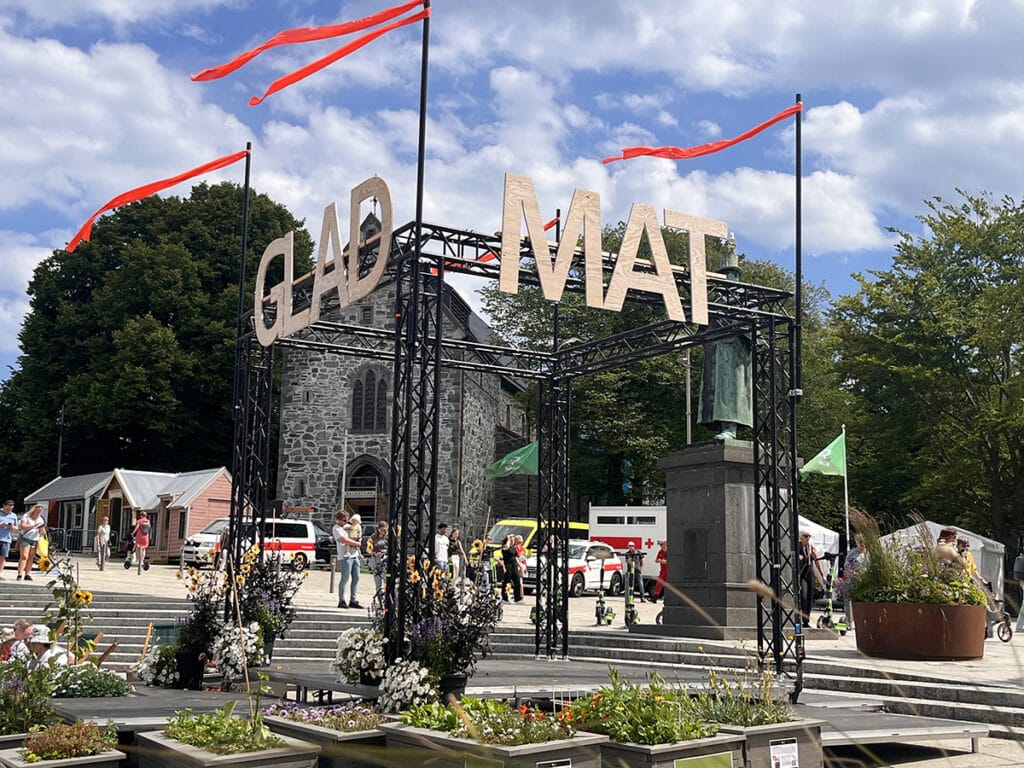
This month, Stavanger’s Gladmat Festival returns. Drawing hundreds of thousands of visitors and over 100 food exhibitors. For brands, it’s more than a festival. It’s an opportunity to build connections and relevance.
This isn’t just clever branding, it’s high-ROI strategy. When brands create cut through and align with memories, they drive loyalty, seasonal sales, and lasting relevance. The result? Long-term revenue growth.
For CEOs, the message is clear: strategic marketing isn’t a cost – it’s a competitive investment. Being remembered beats being seen. And being chosen beats both… So as Gladmat is preparing for its 2025 festival, here’s a few examples of how food brands have created cut through:
TINE: The ROI of Showing Up Where It Matters
Since 1998, TINE has been more than a dairy brand – it’s been a fixture of childhood summers through TINE Fotballskole. By backing local football programs across Norway, TINE didn’t just sponsor a holiday activity, the brand became part of growing up.
Tens of thousands of kids wear TINE-branded kits every year, turning casual matches into meaningful brand moments. But the real value lies in consistency: TINE shows up where its core values- childhood, health, and community -naturally live.
This is grassroots marketing done right. Hyper-local, emotionally resonant, and long-term. The result? A brand trusted not just for its products, but for its presence.
Kvikk Lunsj: The ROI of Ritual
Since the 1930s, Kvikk Lunsj has positioned itself as fuel for the outdoors,but it’s on Norway’s snowy trails that the brand truly delivers. Wrapped in its iconic red, yellow, and green stripes, it’s become as expected on a ski trip as wool socks and a thermos.
This isn’t just nostalgia, it’s strategic marketing. Kvikk Lunsj has embedded itself into national habits, making the leap from product to ritual. It’s not a chocolate bar you buy; it’s one you pack. By aligning with lifestyle moments and showing up consistently, the brand earns loyalty, seasonal spikes, and long-term relevance-proof that memory builds margin.
Food is universal, across markets and cultures. Creating cut through with events is not just limited to Norway.
KFC Japan: The ROI of Cultural Opportunity
In a country where Christmas isn’t traditionally celebrated, KFC saw white space—and filled it with fried chicken. In 1974, the brand launched its now-iconic “Kurisumasu ni wa Kentakkii!” (“Kentucky for Christmas!”) campaign, positioning KFC as the festive meal for families without set traditions.
This wasn’t just clever—it was insight-driven. The campaign tapped into a cultural gap, offering a joyful, shared experience at a time of year centred on togetherness.
By aligning its brand with a new cultural ritual, KFC didn’t just boost seasonal sales—it created one of the most successful examples of brand-led tradition building. The result? Market dominance every December and decades of emotional resonance.
What B2B Brands Can Learn from the Food Brand Masters
Although food brands are B2C, strategic thinking and learnings can be applied across sectors.
In our core markets (energy, maritime, aquaculture and technology), the stakes are high and the audience’s niche. However, the principles of standout brand building remain the same:
- Be present where it matters: Just as TINE shows up in grassroots football, B2B brands can connect at industry events, training programs, or through long-term community involvement. Visibility is strongest when it’s connected with relevance.
- Build rituals, not just recognition: Kvikk Lunsj turned chocolate into a cultural habit. What moments define your customers’ routines? Find them. Own them.
- Spot the cultural gap: KFC in Japan didn’t wait for permission to be part of the holiday season, it created the moment. B2B brands can do the same by spotting unmet emotional or operational needs and creating category-defining responses.
In a crowded market, standing out isn’t down to luck, it’s built with strategy.
